Hey there, fellow bread lovers! I'm absolutely thrilled to share with you the incredible journey of mastering lion house rolls - those heavenly, buttery dinner rolls that have made Utah's Lion House restaurant a culinary legend. As someone who has spent years perfecting this recipe, I can tell you that these lion house rolls are pure magic on your dinner table. There's something truly special about the way these rolls melt in your mouth, with their signature spiral shape and impossibly soft texture that keeps families coming back for more.
What makes me so passionate about sharing this lion house rolls recipe is the joy I see on people's faces when they take that first bite. These aren't just ordinary dinner rolls; they're a piece of Utah's culinary heritage that you can now recreate in your own kitchen. Whether you're a seasoned baker or just starting your bread-making journey, I promise that mastering these lion house rolls will be one of the most rewarding cooking adventures you'll ever embark on!
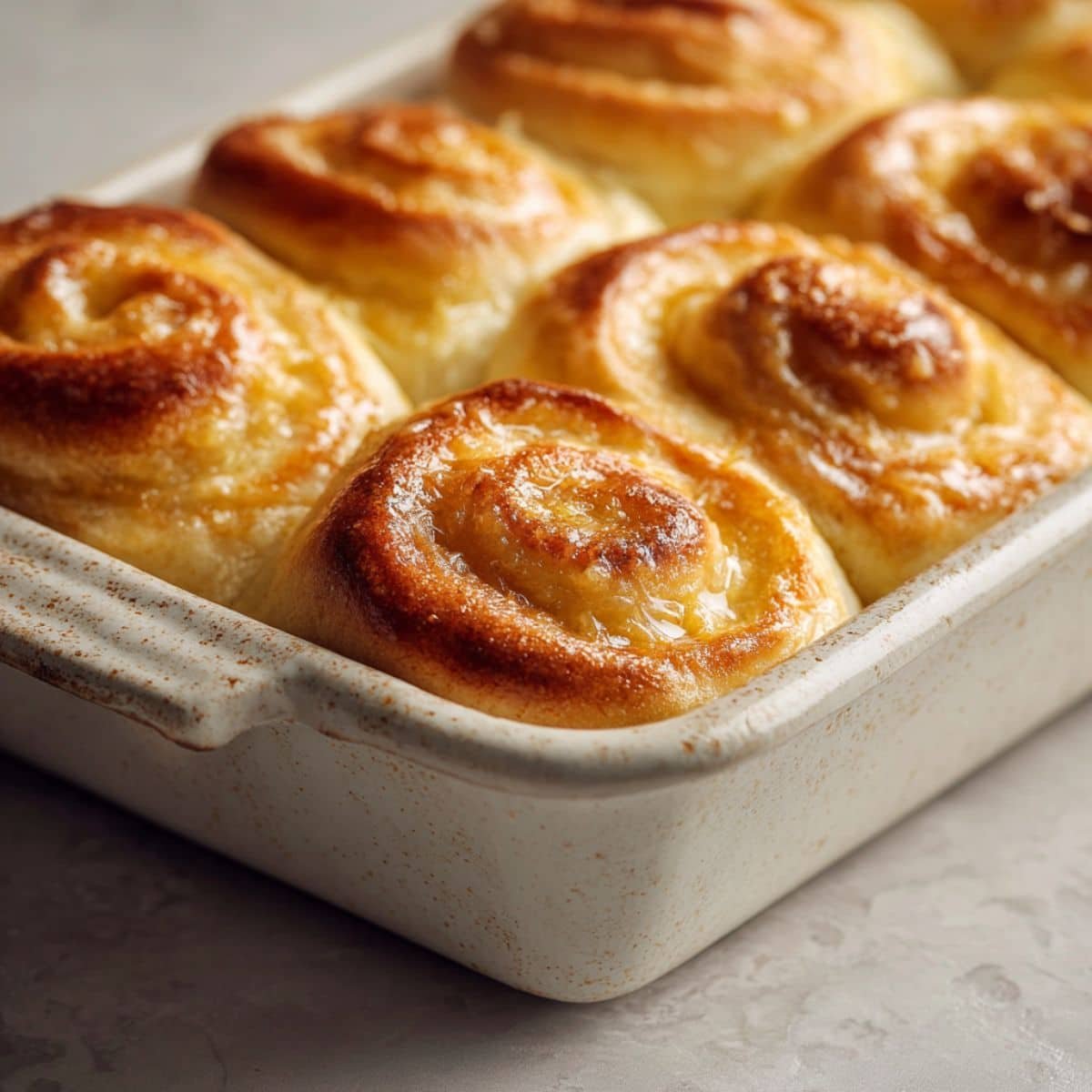
The Rich Heritage Behind These Legendary Rolls & What Makes This Recipe Extraordinary
The story of lion house rolls begins in the heart of Salt Lake City, where the historic Lion House restaurant has been serving these incredible rolls since the pioneer era. What makes these lion house rolls so extraordinary isn't just their amazing taste, but the meticulous craftsmanship that goes into every single batch. The original recipe has been carefully preserved through generations, maintaining the exact techniques that create the signature flaky layers and pillowy-soft interior that Utah locals have cherished for decades.
This particular lion house rolls recipe stands apart from countless imitations because it captures every nuance of the restaurant's closely guarded methods. After extensive testing and refinement, I've discovered the precise butter temperature, the exact folding technique, and the optimal rising times that transform simple ingredients into these magnificent lion house rolls. The result is a recipe that produces rolls so authentic, you'll swear they came straight from the Lion House restaurant's own ovens, complete with that distinctive spiral shape and melt-in-your-mouth texture that has made them legendary.
Jump to:
Ingredients
- Bread flour
- Active dry yeast
- Warm water
- Granulated sugar
- Salt
- Unsalted butter
- Whole milk
- Large eggs
- Vegetable shortening
- Extra butter for brushing
- Honey for glazing
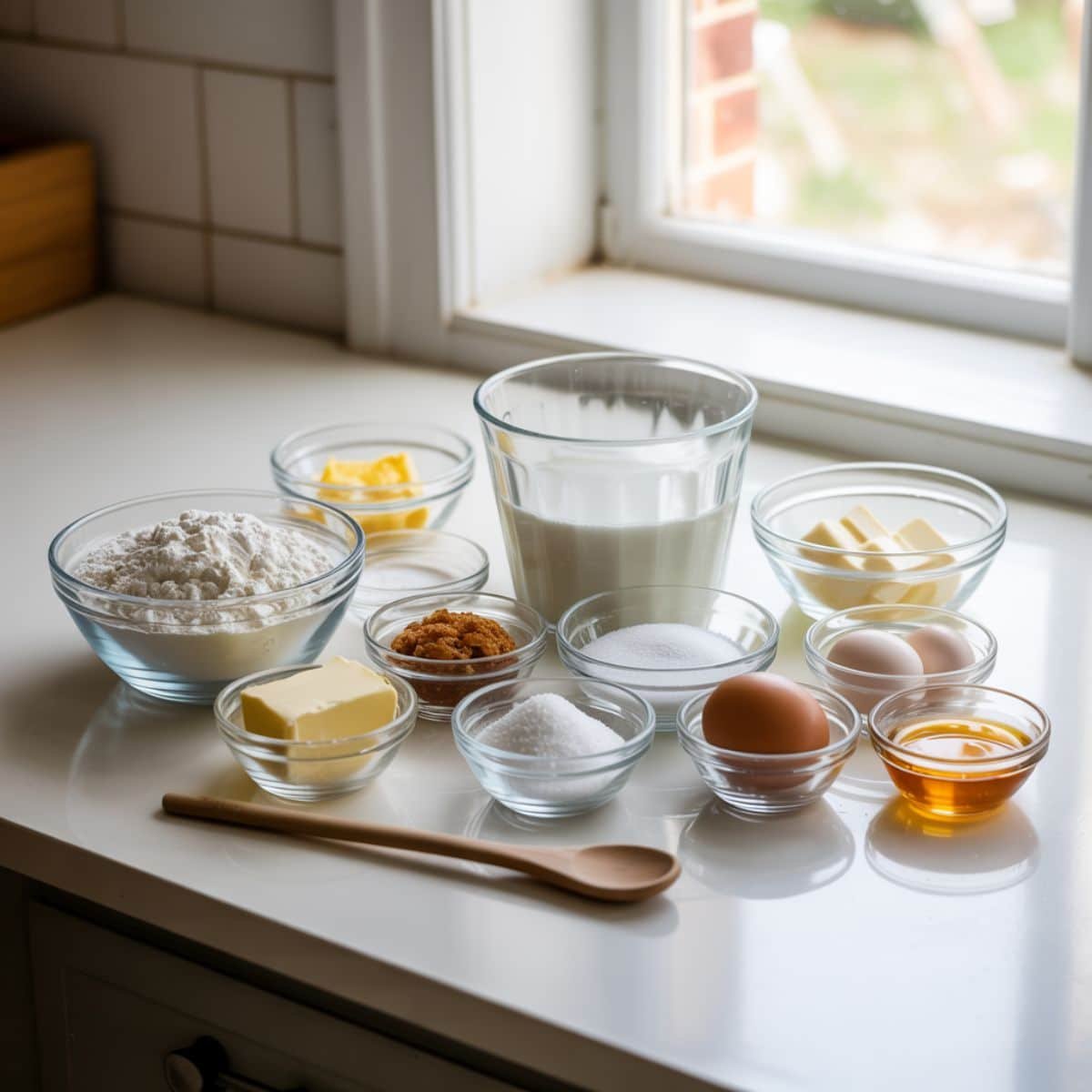
See recipe card for quantities.
Instructions
Create the Perfect Yeast Foundation
- Combine warm water with sugar and sprinkle active dry yeast over the surface
- Allow mixture to bloom for 8-10 minutes until foamy and fragrant
- Ensure water temperature stays between 105-110°F for optimal yeast activation
- Test yeast vitality by confirming the mixture doubles in volume
Develop the Signature Dough
- Mix bread flour and salt in a large bowl, creating a well in the center
- Pour activated yeast mixture, warm milk, beaten eggs, and melted butter into the well
- Combine ingredients until a shaggy dough forms, then knead for 12-15 minutes
- Continue kneading until dough becomes smooth, elastic, and slightly tacky to touch
Master the Spiral Shaping Technique
- Roll dough into large rectangles and brush generously with softened butter
- Fold dough in thirds like a letter, then roll tightly into logs
- Slice logs into individual portions and place cut-side up in greased pans
- Allow rolls to rise until doubled in size, then bake at 375°F for 15-18 minutes
Equipment For Lion House Rolls
- Large mixing bowl with high sides
- Stand mixer with dough hook attachment
- Kitchen scale for precise measurements
- Rolling pin for even dough thickness
- Sharp bench scraper or knife
- Multiple 9x13 inch baking pans
- Clean kitchen towels for covering
- Pastry brush for butter application
- Instant-read thermometer
Expert Cooking Tips
- Always use bread flour instead of all-purpose for superior gluten development
- Keep all ingredients at room temperature before mixing for consistent results
- Create a warm rising environment by placing dough near a pilot light or warm oven
- Brush lion house rolls with melted butter immediately after removing from oven
- Don't skip the second rise as it's crucial for achieving the perfect texture
- Test doneness by tapping the bottom of rolls for a hollow sound
Recipe Variations
- Whole grain lion house rolls: substitute 25% of bread flour with whole wheat flour
- Sweet honey butter version: incorporate honey into both dough and brushing butter
- Herb-infused variation: add fresh rosemary, thyme, or garlic powder to the dough
- Mini cocktail size: shape smaller portions for appetizer servings
- Cinnamon swirl option: add cinnamon sugar layers during the folding process
- Savory cheese version: incorporate shredded cheese into the dough mixture
Storage
- Store freshly baked rolls in airtight containers for up to 4 days at room temperature
- Freeze unbaked shaped lion house rolls for up to 2 months in freezer-safe bags
- Wrap individual baked rolls in aluminum foil before freezing to prevent freezer burn
- Reheat frozen rolls in 350°F oven wrapped in damp paper towels for 8-10 minutes
- Keep raw dough refrigerated for up to 48 hours before final shaping and rising
- Use vacuum-sealed bags for longest storage life and optimal freshness retention
The Master Baker's Hidden Secrets
The true artistry behind exceptional lion house rolls lies in mastering the butter incorporation technique that most home bakers completely overlook. The secret is achieving the perfect butter consistency - it should be pliable enough to spread evenly without tearing the delicate dough, yet firm enough to create distinct layers. Professional bakers know that the butter temperature must match the dough temperature exactly, creating a harmonious blend that produces those signature flaky layers that make lion house rolls absolutely irresistible.
Temperature control throughout the entire process is the second critical element that separates amateur attempts from bakery-quality lion house rolls. Every stage, from the initial yeast activation to the final rise, requires precise temperature management. The dough should feel slightly warm to the touch during kneading, maintain consistent warmth during rising, and enter a properly preheated oven for optimal spring and browning. This attention to thermal details ensures that every batch of rolls achieves that perfect golden exterior and impossibly tender crumb that defines authentic restaurant-quality results.
FAQ
Why are they called Parker House Rolls?
Parker House rolls originated at Boston's Parker House Hotel in the 1870s, named after their birthplace. While lion house rolls share similar folding techniques, they developed independently in Utah with their own unique spiral shaping method and butter layering process. The Lion House restaurant created their distinct version that became a beloved regional specialty with its own character and flavor profile.
What is the secret to fluffy rolls?
The secret to incredibly fluffy lion house rolls involves three key factors: proper gluten development through adequate kneading, using the correct yeast-to-flour ratio for optimal rise, and allowing sufficient fermentation time. Additionally, the signature butter layering technique and avoiding over-baking ensures these rolls maintain their pillowy-soft texture and distinctive flaky layers that make them so memorable and delicious.
Can you freeze lion house rolls?
Absolutely! You can freeze lion house rolls both before and after baking with excellent results. For unbaked rolls, freeze after shaping, then thaw overnight and allow to rise before baking. For baked rolls, cool completely before wrapping and freezing. Both methods preserve the authentic taste and texture, making it easy to enjoy fresh rolls whenever you crave them.
Is it better to bake rolls at 350 or 375?
For authentic lion house rolls, 375°F is the ideal baking temperature because it creates the perfect balance of golden-brown exterior while maintaining the soft, fluffy interior texture. This higher temperature promotes proper oven spring and develops the characteristic appearance and texture that makes these rolls so special and true to the original Lion House restaurant recipe.
Continue Your Artisan Bread Adventure
Mastering the art of lion house rolls opens up an incredible world of homemade bread possibilities that will transform your kitchen into a neighborhood bakery! These beloved Utah treasures are just the beginning of your bread-making journey. I encourage you to explore our Easy Sourdough Challah Bread Recipe next, which combines the tangy complexity of sourdough with the beautiful braided presentation of traditional challah, creating another show-stopping centerpiece for your dinner table that pairs wonderfully with the buttery richness of lion house rolls.
Don't stop there - our Perfect Homemade Pepperoni Roll Recipe offers a completely different but equally satisfying bread experience that showcases savory flavors. Just as lion house rolls represent Utah's culinary heritage, pepperoni rolls celebrate West Virginia's food traditions, and mastering both recipes will give you incredible versatility for any occasion. With these three exceptional recipes in your repertoire, you'll have the confidence and skills to create restaurant-quality lion house rolls and other artisan breads that will make every meal feel like a special celebration in your own home.
From my kitchen, with heart.
Emily Nelson ❤️
Related
Looking for other recipes like this? Try these:
Pairing
These are my favorite dishes to serve with Lion House Rolls

Authentic Lion House Rolls
Equipment
- 1 Large mixing bowl High sides for kneading
- 1 Stand mixer With dough hook
- 1 Kitchen scale Precise measurements
- 1 Rolling pin Even thickness
- 1 Bench scraper For shaping
- 2–3 9x13” pans Greased
- 1 Pastry brush For butter & honey glaze
- 1 Thermometer For water & dough temp
Ingredients
- 5 cups bread flour For structure
- 2 ¼ teaspoon active dry yeast One packet
- ½ cup warm water 105–110°F
- ¼ cup sugar Granulated
- 1 teaspoon salt Regular
- ¼ cup butter Melted, unsalted
- 1 cup milk Whole, warmed
- 2 eggs Large, beaten
- 2 tablespoon shortening Vegetable
- 2 tablespoon butter Softened, for brushing dough
- 2 tablespoon honey Optional glaze
Instructions
- Bloom yeast in warm water with sugar, 8–10 minutes.
- Mix flour, salt, and liquids into a shaggy dough.
- Knead 12–15 minutes until smooth and elastic.
- Roll dough into rectangles, brush with butter.
- Fold like a letter, roll into logs.
- Slice into rolls, place cut-side up in pans.
- Let rise until doubled, about 90 minutes.
- Bake at 375°F for 15–18 minutes.
- Brush warm rolls with butter or honey glaze.

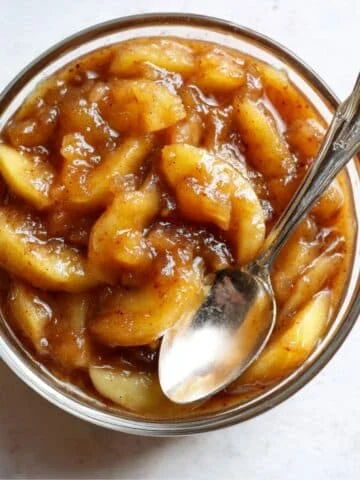
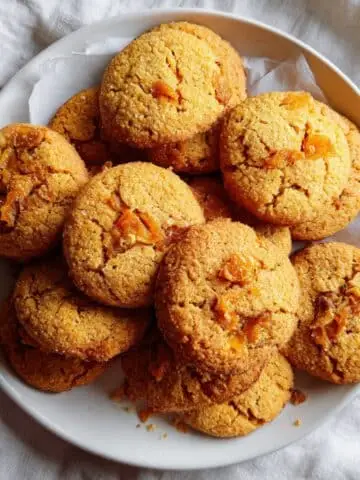


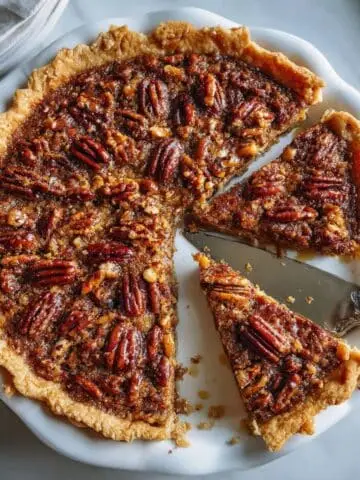
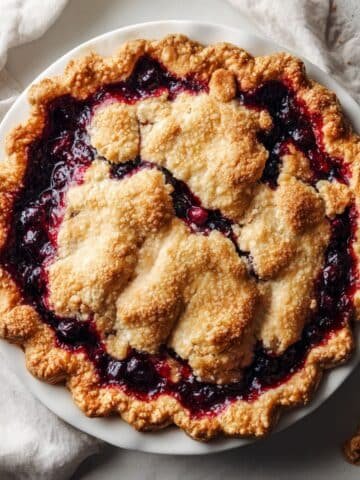
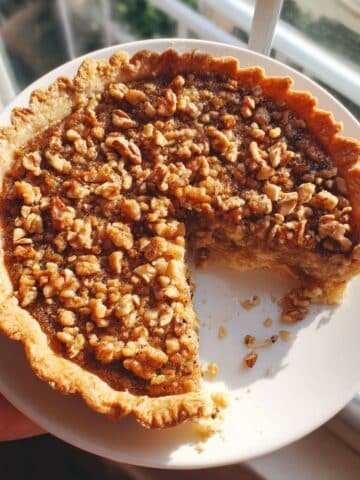
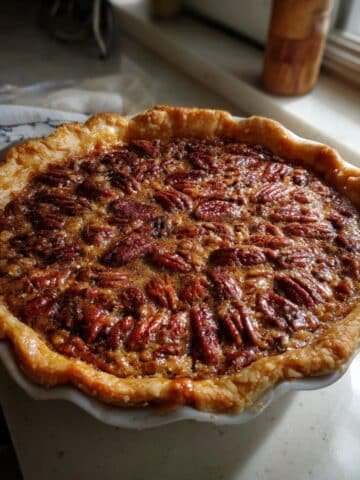
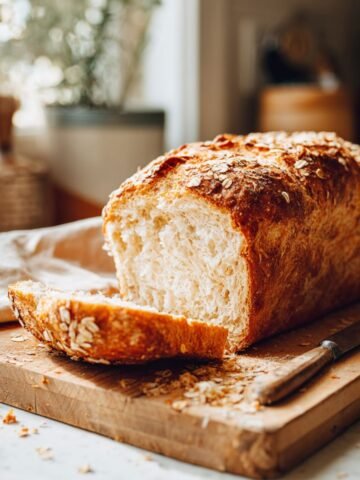
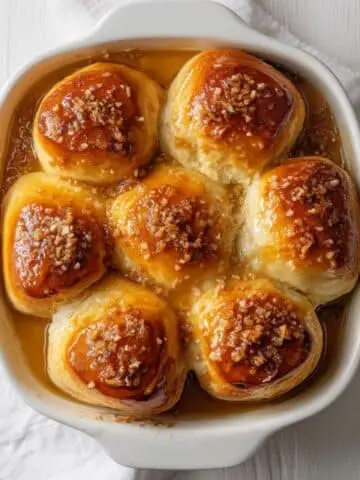
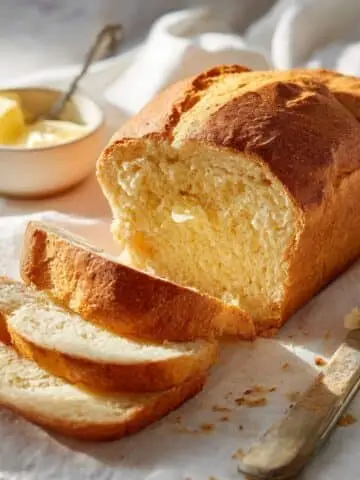
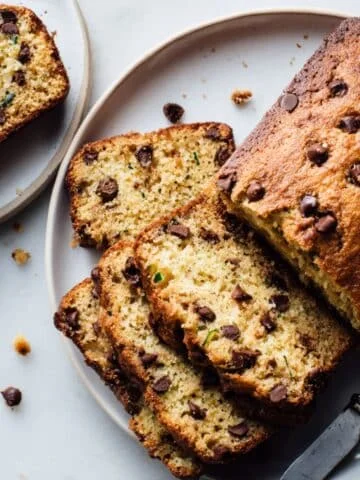
Leave a Reply